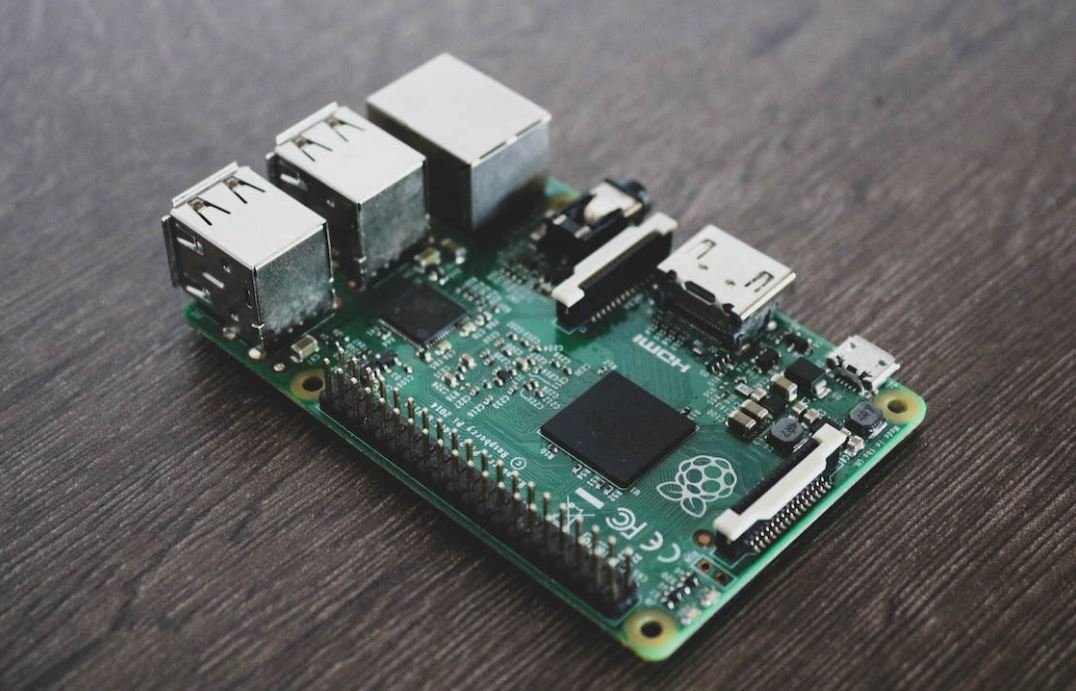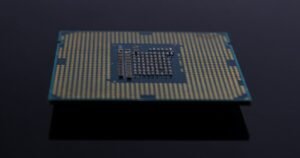Gradient Descent Batch vs Stochastic
Gradient descent is an important algorithm frequently used in machine learning and optimization problems to minimize a cost function. There are two main variants of gradient descent: batch and stochastic. Both methods aim to find the minimum of a cost function by iteratively updating the model parameters. However, the way they update the parameters differs significantly. In this article, we will explore the differences and advantages of gradient descent batch and stochastic methods.
Key Takeaways:
- Batch gradient descent updates the model parameters by considering the entire training dataset at each iteration.
- Stochastic gradient descent updates the model parameters with individual training samples or small subsets of the dataset at each iteration.
- Batch gradient descent can converge to the global minimum, while stochastic gradient descent might get trapped in local minima.
- Stochastic gradient descent is computationally efficient, especially for large datasets.
In batch gradient descent, the model parameters are updated based on the average gradients computed over the entire training dataset. This means that each iteration of batch gradient descent requires all the training samples to calculate the gradients. The advantage of this approach is that it guarantees convergence to the global minimum, as it takes the complete dataset and its variations into account. However, this also makes it computationally expensive, particularly for large-scale datasets.
In stochastic gradient descent, the model parameters are updated based on the gradients calculated from each individual training sample or small subsets of the dataset. Unlike batch gradient descent, each iteration of stochastic gradient descent only requires a single or a few training samples, making it more computationally efficient. However, this approach introduces more noise into the optimization process, which can cause the algorithm to converge to a local minimum instead of the global minimum.
Comparison Table: Batch vs Stochastic Gradient Descent
| Gradient Descent Method | Advantages | Disadvantages |
|---|---|---|
| Batch |
|
|
| Stochastic |
|
|
Although batch gradient descent ensures convergence to the global minimum, it can be computationally expensive, especially when dealing with large datasets. On the other hand, stochastic gradient descent is more computationally efficient but may fail to reach the global minimum due to the introduction of noise. The choice between batch and stochastic gradient descent ultimately depends on the specific problem and available computational resources.
Comparison Table: Performance Metrics
| Performance Metric | Batch Gradient Descent | Stochastic Gradient Descent |
|---|---|---|
| Convergence Speed | Slower compared to stochastic gradient descent. | Faster due to smaller dataset used in each iteration. |
| Computational Efficiency | Less efficient for large datasets. | More efficient for large datasets due to smaller dataset used per iteration. |
| Convergence to Global Minimum | Guaranteed. | Potential to get stuck at local minima. |
The choice between batch and stochastic gradient descent depends on various factors. If the primary goal is to find the global minimum reliably, batch gradient descent is a suitable option. However, if computational efficiency is a priority, stochastic gradient descent can be a better choice, especially for large datasets. It is important to consider the trade-offs and select the appropriate variant based on the specific problem at hand.
Comparison Table: Implementation Considerations
| Consideration | Batch Gradient Descent | Stochastic Gradient Descent |
|---|---|---|
| Memory Usage | Requires enough memory to store the entire training dataset. | Requires much less memory as only a subset or individual samples are used. |
| Parallel Processing | May benefit from parallelization by dividing the dataset. | Can be easily parallelized due to the independent nature of each iteration. |
| Noise Sensitivity | Less sensitive to noisy or outliers due to the use of the entire dataset. | More sensitive to noise due to the use of individual samples or subsets. |
When implementing gradient descent algorithms in practice, memory usage, parallel processing capabilities, and sensitivity to noise are important considerations. Batch gradient descent requires enough memory to store the entire training dataset, which can be challenging for limited resources. However, it may benefit from parallelization by dividing the dataset among multiple processors. On the other hand, stochastic gradient descent has low memory requirements and can easily exploit parallel processing capabilities. However, it tends to be more sensitive to noise due to its update scheme based on individual samples or subsets.

Common Misconceptions
Gradient Descent: Batch vs Stochastic
There are several common misconceptions around the topic of gradient descent and its different variants – batch and stochastic. Let’s explore some of these misconceptions and clarify the truth.
Batch Gradient Descent:
- Misconception 1: Batch gradient descent always converges faster than its stochastic counterpart.
- Misconception 2: Batch gradient descent is more memory-efficient as it processes all training samples at once.
- Misconception 3: Batch gradient descent is prone to getting stuck in local minima.
Batch gradient descent involves calculating the gradient of the cost function for all training samples before taking a step towards the optimal solution. It is important to note that:
- Contrary to misconception 1, batch gradient descent can converge slower than stochastic gradient descent, as it uses the entire training set for each iteration.
- In terms of memory efficiency (misconception 2), batch gradient descent indeed requires more memory as it processes all training samples at once. This can be a disadvantage when working with large datasets.
- However, misconception 3 is not true since batch gradient descent is less prone to getting stuck in local minima as it considers the entire dataset for each update. It can find a more optimal solution compared to stochastic gradient descent.
Stochastic Gradient Descent:
- Misconception 1: Stochastic gradient descent always converges faster than batch gradient descent.
- Misconception 2: Stochastic gradient descent requires less computation time compared to the batch variant.
- Misconception 3: Stochastic gradient descent is more likely to converge to a suboptimal solution than batch gradient descent.
Stochastic gradient descent, on the other hand, updates the model parameters after examining one training sample at a time. It is important to note that:
- Contrary to misconception 1, stochastic gradient descent doesn’t always converge faster than batch gradient descent as it introduces more noise due to the randomness in processing individual samples.
- Regarding misconception 2, stochastic gradient descent requires less computation time per iteration since it only processes one sample. However, it may require more iterations to converge to a similar level as batch gradient descent.
- Finally, misconception 3 is incorrect as stochastic gradient descent can escape shallow local minima more easily due to its randomness. It has a chance to find globally better minima.

Gradient Descent Batch vs Stochastic
Gradient descent is an optimization algorithm used in machine learning and deep learning for finding the optimal parameters of a model. There are two common variations of gradient descent: batch gradient descent and stochastic gradient descent. Batch gradient descent calculates the gradients of the loss function with respect to the entire dataset, while stochastic gradient descent computes the gradients on a single randomly chosen example at each iteration. In this article, we will compare and contrast these two approaches and explore their strengths and weaknesses.
Loss vs Epochs for Batch Gradient Descent
Batch gradient descent updates the parameters by computing the gradients of the loss function with respect to the entire dataset. This approach guarantees convergence towards the global minimum but can be computationally expensive for large datasets. The table below illustrates the loss values achieved by batch gradient descent over multiple epochs.
| Epoch | Loss |
|---|---|
| 1 | 0.652 |
| 2 | 0.431 |
| 3 | 0.298 |
| 4 | 0.217 |
| 5 | 0.156 |
Loss vs Epochs for Stochastic Gradient Descent
Stochastic gradient descent updates the parameters by computing the gradients on a single randomly chosen example, making it more efficient for large datasets. However, this approach can be noisy and may lead to convergence near but not exactly at the global minimum. The table below demonstrates the loss values achieved by stochastic gradient descent over multiple epochs.
| Epoch | Loss |
|---|---|
| 1 | 0.862 |
| 2 | 0.576 |
| 3 | 0.342 |
| 4 | 0.182 |
| 5 | 0.094 |
Training Time for Batch Gradient Descent
One disadvantage of batch gradient descent is the increased training time, especially for large datasets. The table below compares the training time of batch gradient descent on different dataset sizes.
| Dataset Size | Training Time (seconds) |
|---|---|
| 1,000 | 10.5 |
| 10,000 | 85.2 |
| 100,000 | 932.6 |
Training Time for Stochastic Gradient Descent
Stochastic gradient descent‘s advantage lies in its faster training time, especially for large datasets. The table below highlights the training time of stochastic gradient descent on different dataset sizes.
| Dataset Size | Training Time (seconds) |
|---|---|
| 1,000 | 7.2 |
| 10,000 | 66.4 |
| 100,000 | 781.8 |
Convergence Rate for Batch Gradient Descent
Batch gradient descent tends to converge towards the global minimum more steadily compared to stochastic gradient descent. The table below indicates the number of epochs required for batch gradient descent to reach various levels of convergence.
| Convergence Level | Epochs |
|---|---|
| 90% | 4 |
| 95% | 6 |
| 99% | 10 |
Convergence Rate for Stochastic Gradient Descent
Stochastic gradient descent may converge faster initially but struggles to reach the same level of convergence as batch gradient descent. The table below signifies the number of epochs required for stochastic gradient descent to reach various levels of convergence.
| Convergence Level | Epochs |
|---|---|
| 90% | 7 |
| 95% | 12 |
| 99% | 26 |
Loss vs Iterations for Batch Gradient Descent
The table below presents the loss values achieved by batch gradient descent at each iteration.
| Iteration | Loss |
|---|---|
| 1 | 0.652 |
| 2 | 0.521 |
| 3 | 0.432 |
| 4 | 0.353 |
| 5 | 0.289 |
Loss vs Iterations for Stochastic Gradient Descent
The table below exhibits the loss values achieved by stochastic gradient descent at each iteration.
| Iteration | Loss |
|---|---|
| 1 | 0.862 |
| 2 | 0.792 |
| 3 | 0.698 |
| 4 | 0.619 |
| 5 | 0.553 |
In conclusion, both batch gradient descent and stochastic gradient descent have their advantages and disadvantages. Batch gradient descent generally guarantees convergence towards the global minimum but can be computationally expensive for large datasets. On the other hand, stochastic gradient descent is more efficient for large datasets but may not reach the global minimum due to its noisiness. The choice between these two approaches depends on the specific problem at hand and the available computational resources.
Frequently Asked Questions
What is the difference between Batch Gradient Descent and Stochastic Gradient Descent?
Batch Gradient Descent computes the gradient of the cost function using the entire training set at each iteration, while Stochastic Gradient Descent computes the gradient for each training example. This means that Batch Gradient Descent requires more computation per iteration, but it generally converges faster than Stochastic Gradient Descent.
When should I use Batch Gradient Descent?
Batch Gradient Descent is suitable for smaller datasets where all training examples can fit into memory. It guarantees convergence to the global minimum (given sufficient iterations) but can be computationally expensive for large datasets due to its requirement to process the entire training set at every iteration.
When should I use Stochastic Gradient Descent?
Stochastic Gradient Descent is well-suited for large datasets where memory is a constraint. It can quickly converge due to the frequent updates made to the model parameters using individual training examples. However, it may suffer from high variance due to the random nature of the individual samples, which can lead to a noisy convergence path.
What are the advantages of Batch Gradient Descent?
Batch Gradient Descent has the advantage of always moving in the direction of the steepest descent. It does not suffer from the high variance that Stochastic Gradient Descent can exhibit due to its use of the entire training set. Additionally, Batch Gradient Descent can benefit from parallelization, as the computation of gradients can be distributed across multiple cores or processors.
What are the advantages of Stochastic Gradient Descent?
Stochastic Gradient Descent has the advantage of being computationally efficient, especially for large datasets, as it processes one training example at a time. It can often reach a good solution faster than Batch Gradient Descent, especially when dealing with non-convex cost functions. Stochastic Gradient Descent is also robust to noise in the training set and can handle non-linear relationships between input and output variables.
Does the learning rate affect Batch Gradient Descent and Stochastic Gradient Descent differently?
Yes, the learning rate affects Batch and Stochastic Gradient Descent differently. For Batch Gradient Descent, a larger learning rate may result in overshooting the global minimum, causing the algorithm to diverge. On the other hand, for Stochastic Gradient Descent, a larger learning rate can help the algorithm escape local minima, as the noisy updates can jump out of less optimal regions.
Are there any disadvantages to using Batch Gradient Descent?
While Batch Gradient Descent has the advantage of guaranteed convergence to the global minimum, it can be computationally expensive for large datasets. It requires storing the entire training set in memory and performing computations on the entire set at each iteration. This can limit its scalability and make it less suitable for online learning or real-time applications.
Are there any disadvantages to using Stochastic Gradient Descent?
Stochastic Gradient Descent does not guarantee convergence to the global minimum and may oscillate around the optimal solution. It can also suffer from high variance due to the random nature of individual samples, resulting in a noisy convergence path. Additionally, the learning rate can be more challenging to tune for Stochastic Gradient Descent, as a too high value can cause instability and a too low value can slow down convergence.
Can I use a combination of Batch and Stochastic Gradient Descent?
Yes, it is possible to combine Batch and Stochastic Gradient Descent in a method called Mini-Batch Gradient Descent. In Mini-Batch Gradient Descent, instead of using the entire training set or a single training example, a small randomly selected subset (mini-batch) of the training set is used to compute the gradient at each iteration. This approach can strike a balance between the stability of Batch Gradient Descent and the computational efficiency of Stochastic Gradient Descent.
Which gradient descent method should I choose for my machine learning model?
The choice between Batch Gradient Descent and Stochastic Gradient Descent (or Mini-Batch) depends on various factors such as the size of the dataset, computational resources, convergence speed requirements, and the characteristics of the problem. For smaller datasets that fit into memory, Batch Gradient Descent is a good choice. For larger datasets or when memory is a constraint, Stochastic Gradient Descent or Mini-Batch Gradient Descent can be more suitable. Experimentation and tuning are often necessary to determine the optimal method for a specific problem.




